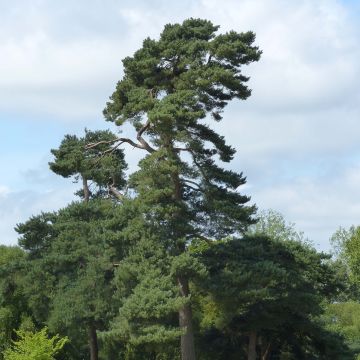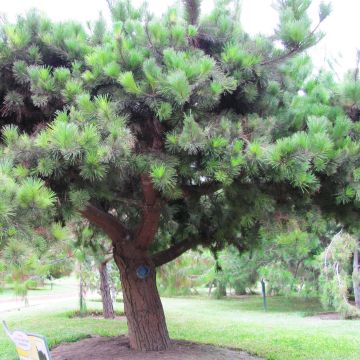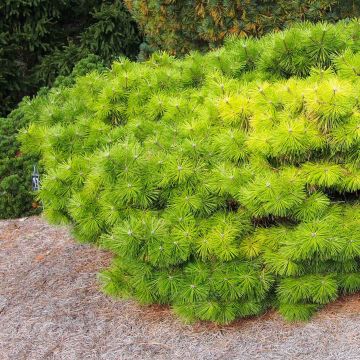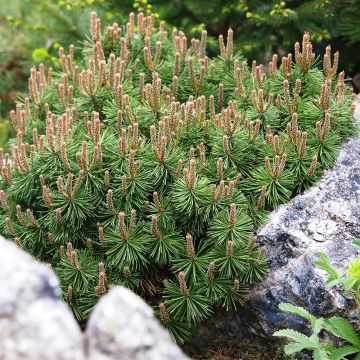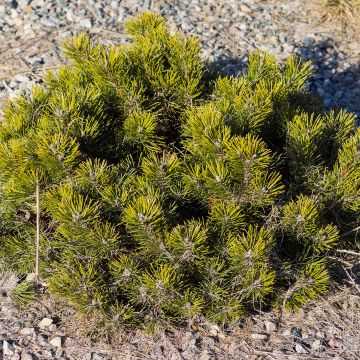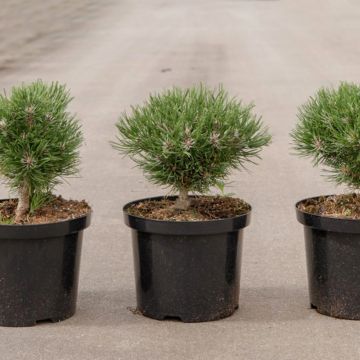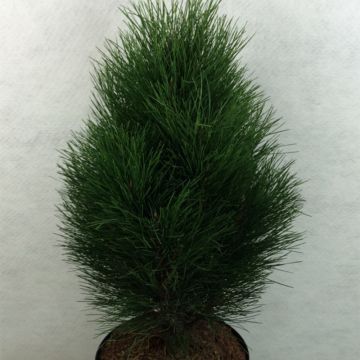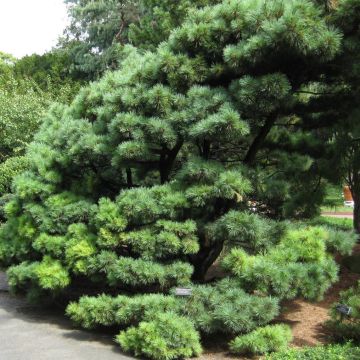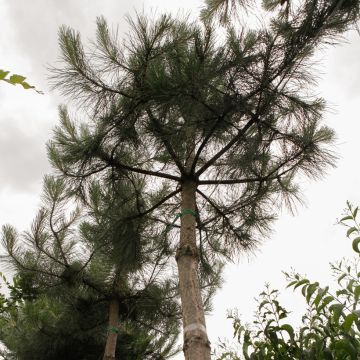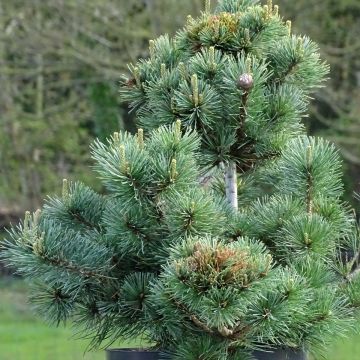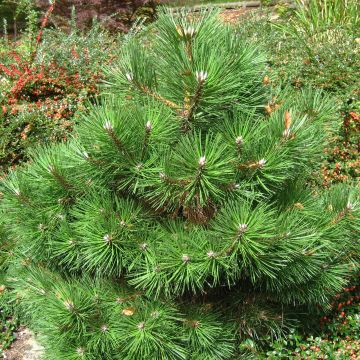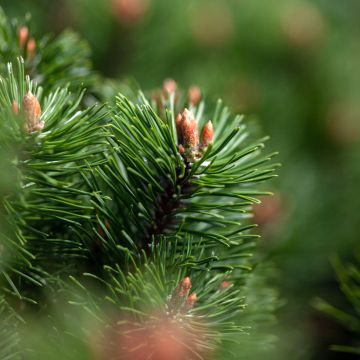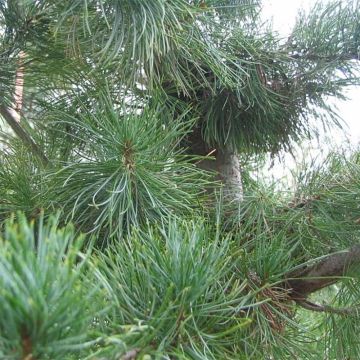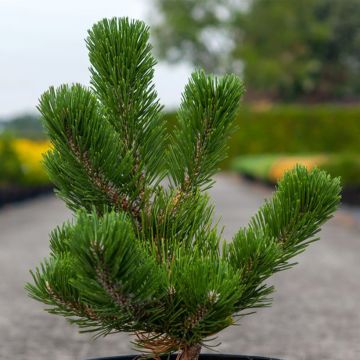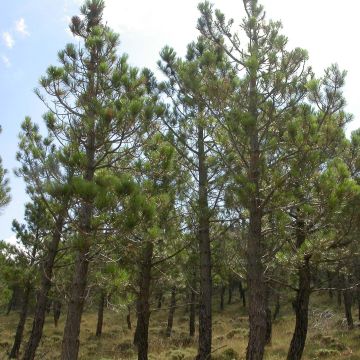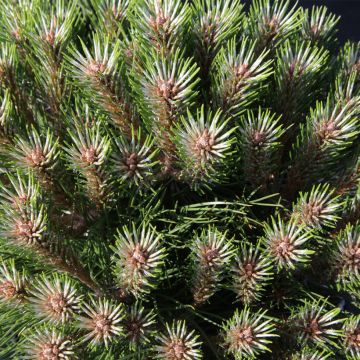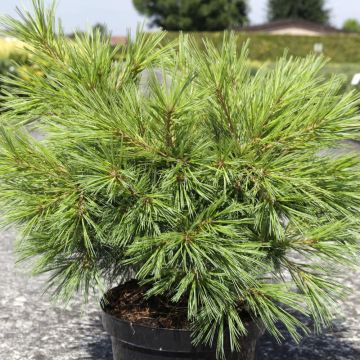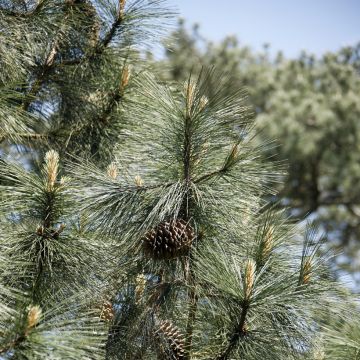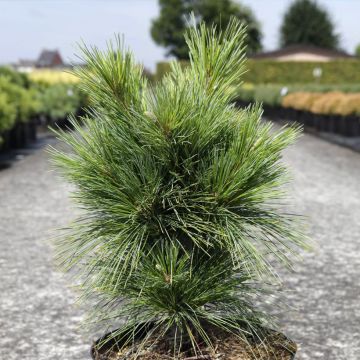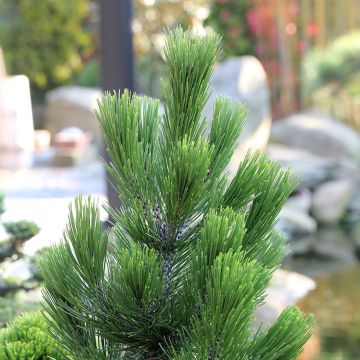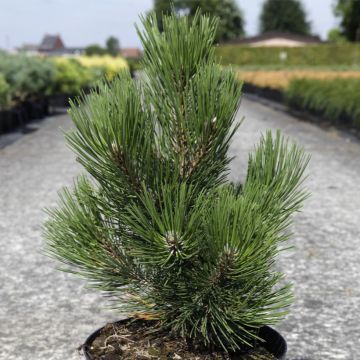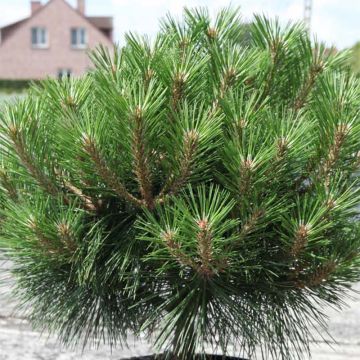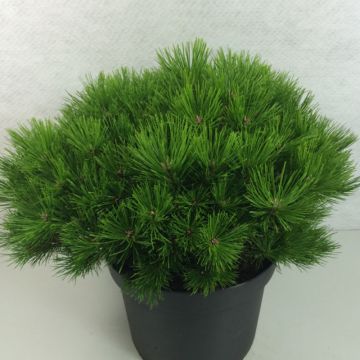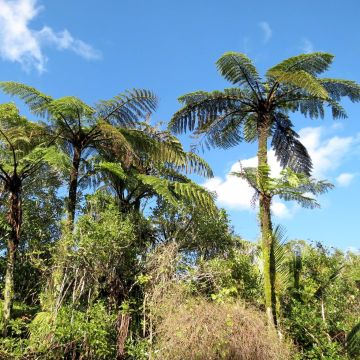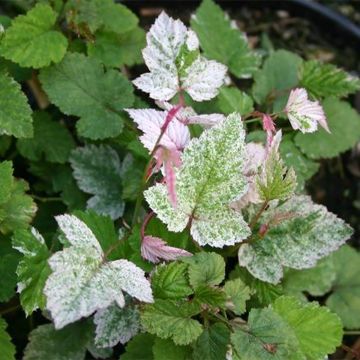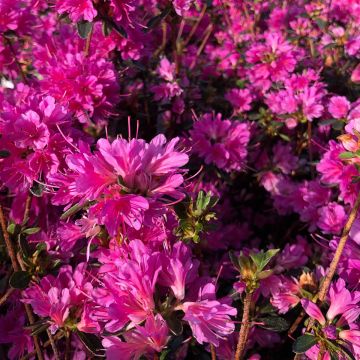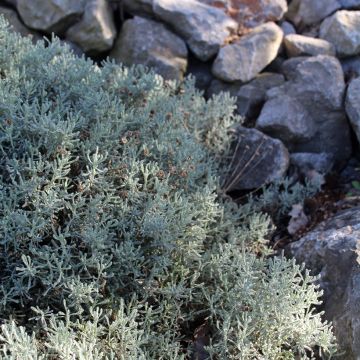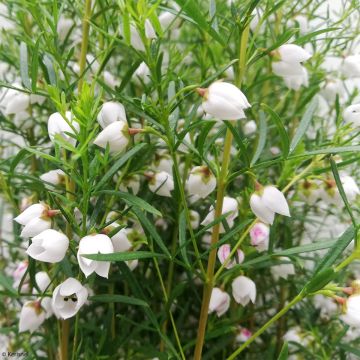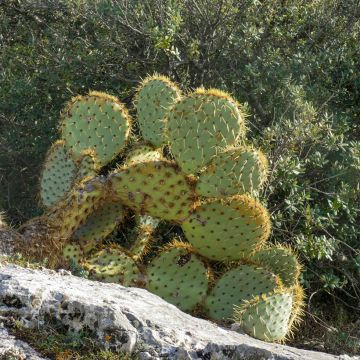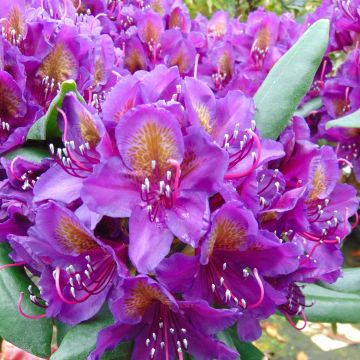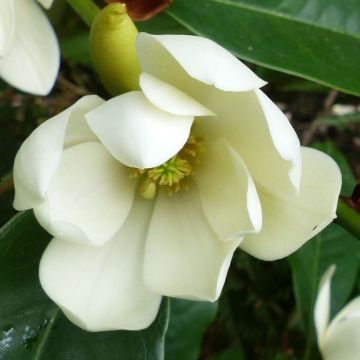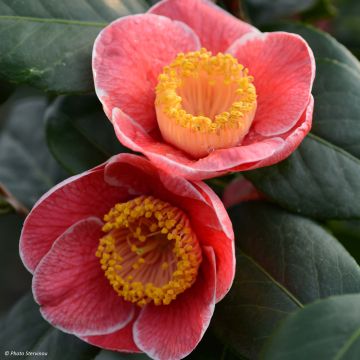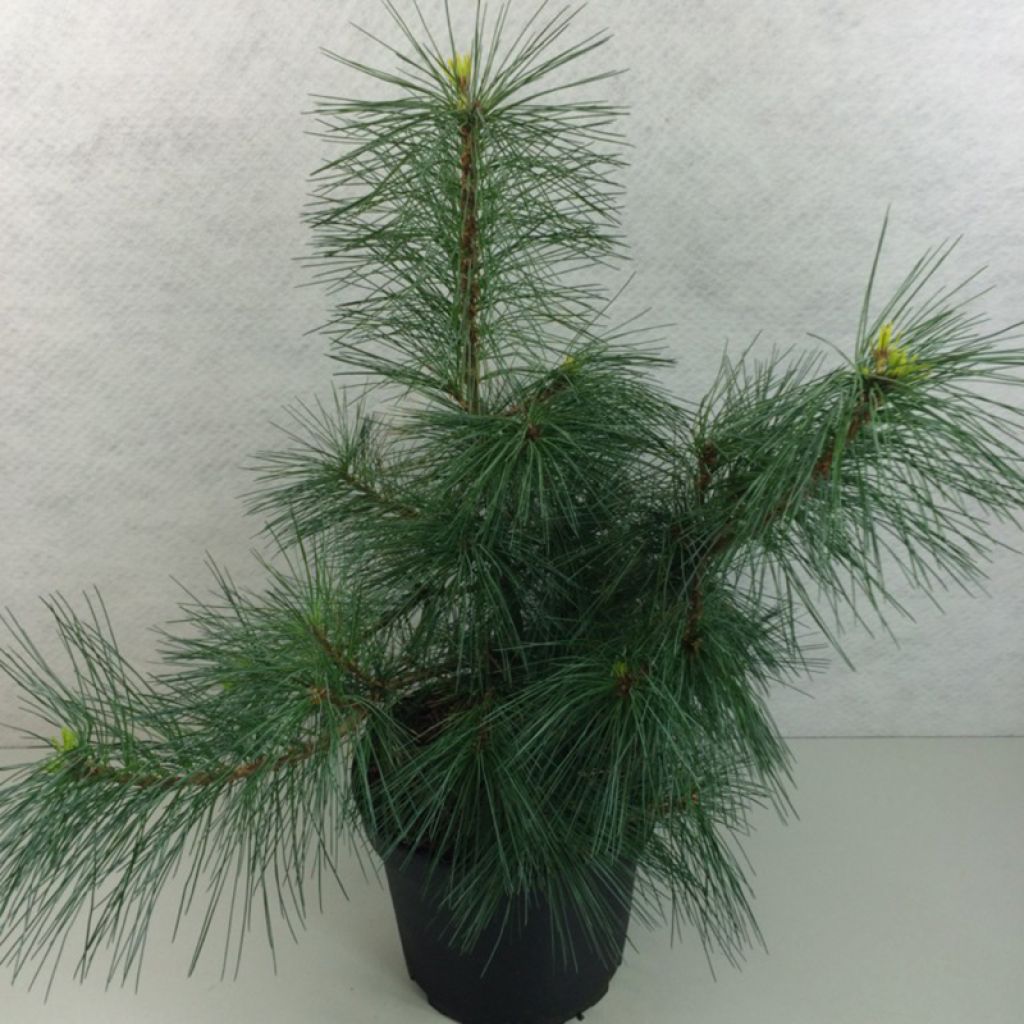

Pinus strobus Wendy - Pin de Weymouth nain
Pinus strobus Wendy - Eastern White Pine
Pinus strobus Wendy
Eastern White Pine, Weymouth Pine, Northern White Pine
Why not try an alternative variety in stock?
View all →This plant carries a 24 months recovery warranty
More information
We guarantee the quality of our plants for a full growing cycle, and will replace at our expense any plant that fails to recover under normal climatic and planting conditions.
From €5.90 for pickup delivery and €6.90 for home delivery
Express home delivery from €8.90.
Delivery to Corse prohibited: UE law prohibits the import of this plant from mainland France to Corse as part of the fight against Xylella fastidiosa. Please accept our sincere apologies.
More information
Does this plant fit my garden?
Set up your Plantfit profile →
Description
Pinus strobus 'Wendy', is a dwarf form of the Weymouth pine with surprising foliage. This rounded conical bush is covered with dense, bluish vegetation composed of long, thin needles arranged in radiating skirts. It surprises with its bright yellow spring shoots, shorter than the rest of the foliage, giving the bush a unique personality and a little like a Hawaiian dancer. Its slow growth and moderate size make it a perfect conifer for small spaces, rockeries, or a large pot on the patio. It is a hardy variety, requiring well-drained, not too chalky soil, and is resistant to drought once established.
Pinus strobus, also known as White Pine, Weymouth Pine, is a conifer of the pine family, native to eastern North America, up to Newfoundland Island in Canada. This forest king is a monumental tree, a gigantic pyramidal Christmas tree reaching 90 m (295ft) in height in its original environment, but hardly exceeding 45m (148ft) in height at present due to the destruction of its habitat and massive exploitation. It is a very hardy species, often planted for reforestation in forests or as an ornamental tree in large parks. The bark of this tree is smooth, greenish-grey on young plants, becoming greyish-brown and fissured over time. The lower part of the tree, when mature, shows whitened bark, hence the common name 'White Pine'.
The variety 'Wendy', derived from this species, is distinguished by its reduced size and compact habit, initially rounded when young, then conical and wide with age. Its growth is slow, after 10 years of cultivation, it will occupy about 1.2 m (4ft) in height and 60 cm (24in) in width. Its branches are covered with very blueish-green, fine, soft, and flexible needles, 10 to 15 cm (4 to 6in) long. They are grouped in fives and arranged in tufts, radially around the branches, and hanging loosely towards the ground. The young shoots, on the other hand, are composed of shorter, bright yellow needles, before taking on a green-blue colour in summer. This contrast between the young shoots and the rest of the foliage is the uniqueness of this variety's foliage.
The Weymouth Pine Wendy is an exceptional subject, worthy of showcasing. It will find its place in all gardens, even the smallest ones, as its small size requires no maintenance and it adapts to various soils, except for highly calcareous soils, as well as to many climates. In small spaces, it will stand out when planted as a specimen and elegantly decorate a rockery or a bed. It will of course form a magnificent subject that will enhance balconies or terraces and create a lovely effect in an exotic-style garden. The geometric qualities of conifers naturally impose themselves in the design of a contemporary garden, which prefers the aesthetics of shapes, silhouettes, and textures over the presence of many flowers. These plants, with reassuring permanence, structurally define a flower bed, mark the paths, border the terrace, easily replacing trimmed boxwood or holly. The key is to play with volumes and colours.
Report an error about the product description
Pinus strobus Wendy - Eastern White Pine in pictures
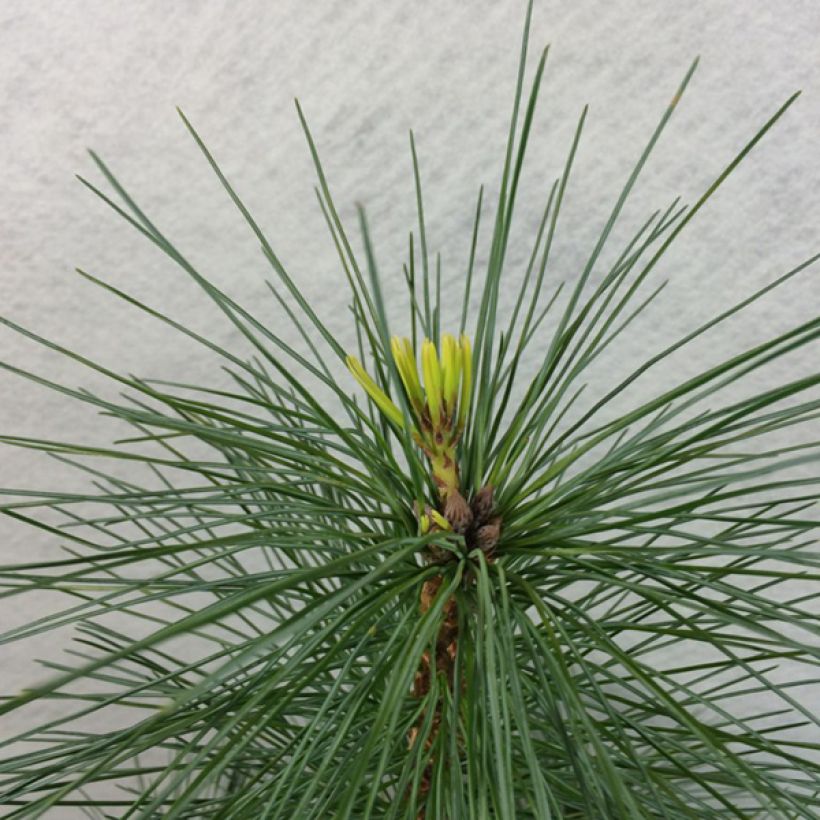

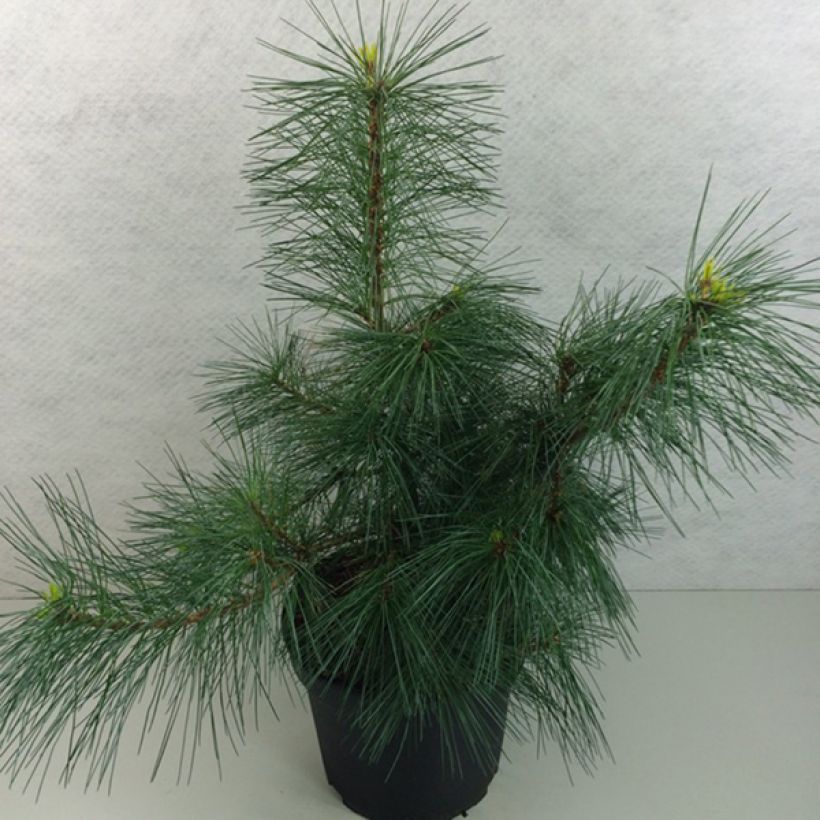

Plant habit
Foliage
Botanical data
Pinus
strobus
Wendy
Pinaceae
Eastern White Pine, Weymouth Pine, Northern White Pine
Cultivar or hybrid
Other Pinus - Pine
Planting and care
Pinus strobus 'Wendy' should be planted from September to November and from February to June in ordinary well-drained soil, even clay or limestone. Choose a sunny spot or partially shaded position in hot climates. Soak the root balls well before planting. Add organic matter at planting and water generously for the first two years, and in the case of prolonged drought. In very poor soil, apply a special conifer fertilizer every year in April and cultivate the soil in summer. This very hardy conifer ,up to -30°C (1°F) at least, is not afraid of wind, adapts to poor soils, but it dislikes waterlogged soils in winter and summer heatwaves. To keep it even more compact, annual pruning can be carried out from September to November, by shortening the shoots that are considered unsightly, to achieve the desired shape over the years.
Planting period
Intended location
Care
This item has not been reviewed yet - be the first to leave a review about it.
Evergreen shrubs
Haven't found what you were looking for?
Hardiness is the lowest winter temperature a plant can endure without suffering serious damage or even dying. However, hardiness is affected by location (a sheltered area, such as a patio), protection (winter cover) and soil type (hardiness is improved by well-drained soil).

Photo Sharing Terms & Conditions
In order to encourage gardeners to interact and share their experiences, Promesse de fleurs offers various media enabling content to be uploaded onto its Site - in particular via the ‘Photo sharing’ module.
The User agrees to refrain from:
- Posting any content that is illegal, prejudicial, insulting, racist, inciteful to hatred, revisionist, contrary to public decency, that infringes on privacy or on the privacy rights of third parties, in particular the publicity rights of persons and goods, intellectual property rights, or the right to privacy.
- Submitting content on behalf of a third party;
- Impersonate the identity of a third party and/or publish any personal information about a third party;
In general, the User undertakes to refrain from any unethical behaviour.
All Content (in particular text, comments, files, images, photos, videos, creative works, etc.), which may be subject to property or intellectual property rights, image or other private rights, shall remain the property of the User, subject to the limited rights granted by the terms of the licence granted by Promesse de fleurs as stated below. Users are at liberty to publish or not to publish such Content on the Site, notably via the ‘Photo Sharing’ facility, and accept that this Content shall be made public and freely accessible, notably on the Internet.
Users further acknowledge, undertake to have ,and guarantee that they hold all necessary rights and permissions to publish such material on the Site, in particular with regard to the legislation in force pertaining to any privacy, property, intellectual property, image, or contractual rights, or rights of any other nature. By publishing such Content on the Site, Users acknowledge accepting full liability as publishers of the Content within the meaning of the law, and grant Promesse de fleurs, free of charge, an inclusive, worldwide licence for the said Content for the entire duration of its publication, including all reproduction, representation, up/downloading, displaying, performing, transmission, and storage rights.
Users also grant permission for their name to be linked to the Content and accept that this link may not always be made available.
By engaging in posting material, Users consent to their Content becoming automatically accessible on the Internet, in particular on other sites and/or blogs and/or web pages of the Promesse de fleurs site, including in particular social pages and the Promesse de fleurs catalogue.
Users may secure the removal of entrusted content free of charge by issuing a simple request via our contact form.
The flowering period indicated on our website applies to countries and regions located in USDA zone 8 (France, the United Kingdom, Ireland, the Netherlands, etc.)
It will vary according to where you live:
- In zones 9 to 10 (Italy, Spain, Greece, etc.), flowering will occur about 2 to 4 weeks earlier.
- In zones 6 to 7 (Germany, Poland, Slovenia, and lower mountainous regions), flowering will be delayed by 2 to 3 weeks.
- In zone 5 (Central Europe, Scandinavia), blooming will be delayed by 3 to 5 weeks.
In temperate climates, pruning of spring-flowering shrubs (forsythia, spireas, etc.) should be done just after flowering.
Pruning of summer-flowering shrubs (Indian Lilac, Perovskia, etc.) can be done in winter or spring.
In cold regions as well as with frost-sensitive plants, avoid pruning too early when severe frosts may still occur.
The planting period indicated on our website applies to countries and regions located in USDA zone 8 (France, United Kingdom, Ireland, Netherlands).
It will vary according to where you live:
- In Mediterranean zones (Marseille, Madrid, Milan, etc.), autumn and winter are the best planting periods.
- In continental zones (Strasbourg, Munich, Vienna, etc.), delay planting by 2 to 3 weeks in spring and bring it forward by 2 to 4 weeks in autumn.
- In mountainous regions (the Alps, Pyrenees, Carpathians, etc.), it is best to plant in late spring (May-June) or late summer (August-September).
The harvesting period indicated on our website applies to countries and regions in USDA zone 8 (France, England, Ireland, the Netherlands).
In colder areas (Scandinavia, Poland, Austria...) fruit and vegetable harvests are likely to be delayed by 3-4 weeks.
In warmer areas (Italy, Spain, Greece, etc.), harvesting will probably take place earlier, depending on weather conditions.
The sowing periods indicated on our website apply to countries and regions within USDA Zone 8 (France, UK, Ireland, Netherlands).
In colder areas (Scandinavia, Poland, Austria...), delay any outdoor sowing by 3-4 weeks, or sow under glass.
In warmer climes (Italy, Spain, Greece, etc.), bring outdoor sowing forward by a few weeks.

































